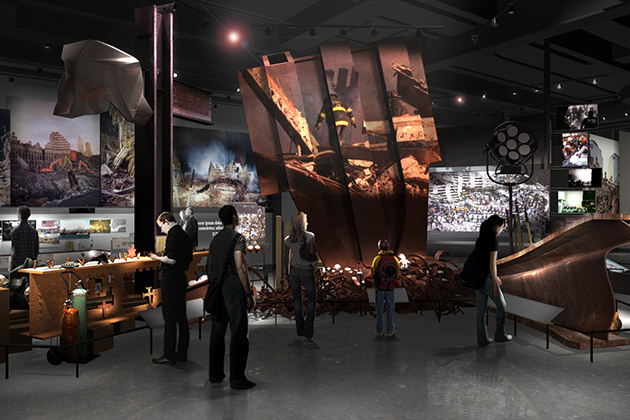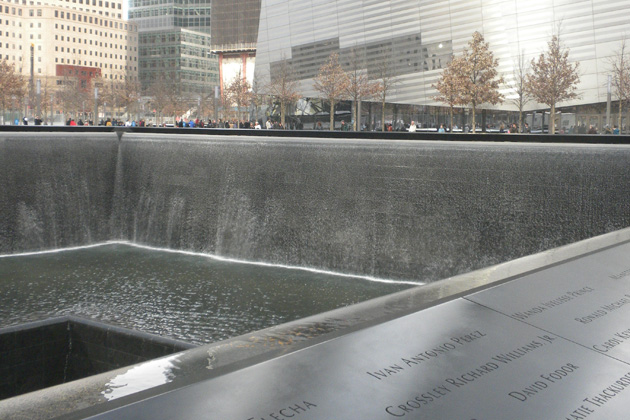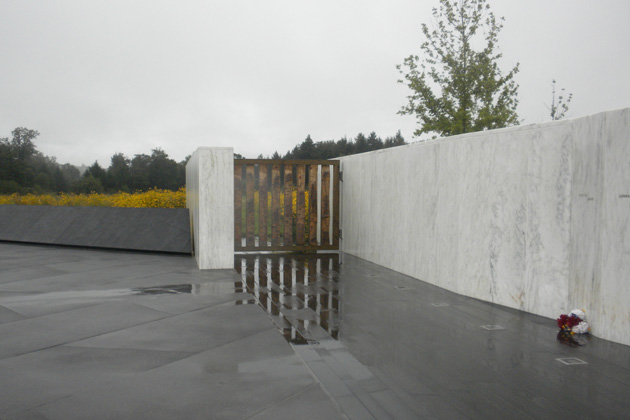
Ken Foote is a professor of behavioral geography and head of the geography department. A nationally recognized expert on the memorialization of space, he is known for his ability to interpret the transformative nature of events involving violence and tragedy through history.
As the nation remembers the events of Sept. 11, 2001, Foote answers some questions regarding ‘Ground Zero’ and the National 9/11 Memorial & Museum, which opened its doors to the public for the first time on May 21 of this year.
What role does the memorial museum play in speaking to – or honoring – the national memory of that day in 2001?
I think the opening of the museum marks a major change at Ground Zero. Museums are common at memorial sites, and range from small interpretive kiosks to major exhibitions like the one opened this year at the World Trade Center site.
But whereas spontaneous memorials go up overnight, museums can be quite controversial and can take many years to fund, design, and build. The reason is that museums tell stories; they interpret events and attempt to weave a narrative from hundreds or thousands of first-person accounts, masses of documents, and varied, sometimes conflicting evidence.
From these materials, on-site museums often attempt to honor tragedy victims by providing a rationale for the causes and consequences of their deaths. A common theme of such exhibits is how the response to one tragedy has helped to prevent another.
Honoring the victims of the 9/11 terror attack has never been at question. At the same time, explaining the reasons for the attack, the success of the terrorists’ plan, and the U.S. response over the past 13 years has been much more difficult to achieve. The 9/11 attack led to two protracted, inconclusive wars, the results of which now seem to be unraveling; there are major questions about the humane treatment of combatants and civilians; and increased concern about intrusive surveillance at home and abroad, among other issues.
So telling the 9/11 story at Ground Zero is a balancing act. It involves honoring the victims, but also dealing with – or somehow ignoring – the somewhat uncomfortable, collateral meanings of the attack and its aftermath. Finding the right balance is very difficult. People who have suffered in a tragedy or have lost family members and friends generally don’t want to read about the killers in the same place where the victims are honored, but such conflicts are almost unavoidable.
What does the presence of a museum – which will undoubtedly become a tourist destination – mean to the survivors and families of victims?

I don’t think the presence of the museum will change the meaning of Ground Zero for survivors and families. People visit tragedy sites for many reasons, and memorial spaces are shared among all visitors. Sometimes the survivors and families of victims are allowed special privileges or access to parts of a memorial site, and I don’t think the World Trade Center area is any different.
The opening of the museum at 9/11 caused some controversy because of the gift shop. There were objections about selling souvenirs right at the memorial site.
Controversies like this do arise from time to time, because commerce in knick-knacks and typical tourist kitsch may be seen as detracting from the somewhat sacred or sanctified tone of a memorial site.
Is there a ‘right’ or ‘wrong’ way to memorialize victims of a disaster of this magnitude, that affected so many different people in so many different ways?
There is no right or wrong way to honor victims and memorialize events of violence and tragedy. However, most responses are shaped by longstanding cultural, religious, and social traditions for expressing loss, grief, and bereavement – silent vigils, memorial services, spontaneous shrines, and permanent memorials.
At the same time, there are often unique characteristics of specific tragedies, their victims, or the places where they occur that influence the forms of memorialization.
At the World Trade Center site, it is the outline of the twin towers that is the focus of the main memorial plaza. At the crash site of Flight 93 in Pennsylvania, the memorial points toward the crash site, but only families are allowed to visit the point of impact.

At Virginia Tech, the memorials to the students and professors killed in 2007 are of the local “Hokie stone,” the local building stone used throughout the campus. The “Survivor Tree,” nearly destroyed in the Oklahoma City bombing of 2005, became a symbol of the memorial after blooming again in 2006. The memorial in Arlington National Cemetery to the victims of the 1988 bombing of Pan Am Flight 103 over Lockerbie, Scotland is a cairn, a traditional form of commemoration, constructed of Scottish stone.
Some of the most difficult issues, which can lead to conflicts over memorials and memorializing, involve decision making: who has the right to speak for victims, survivors, families, and others affected by a tragedy?
Events like 9/11 affect people far beyond the immediate victims and their families, and the views of all parties touched by a tragedy need to be heard as plans for memorializing develop. If one group or a small group takes charge of major decisions, conflicts often arise. Conflicts may also arise when decisions about memorial making are rushed. Pushing for decisions too soon can cause resentment and friction later. Finally, the commercialization of a tragedy site can be a source of conflict. There’s a fine line between maintaining a memorial site and creating a tourist attraction, and the two are seen by many as incompatible.



